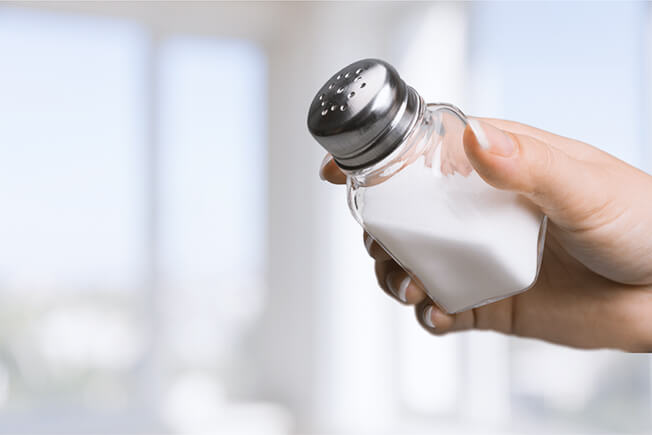5 ways to shake the salt from your diet

Salt is one of the best ways to boost flavor in any dish. This versatile seasoning can even be used as a preservative to help foods last longer. But when you use too much salt, it can lead to some health issues, including high blood pressure, kidney disease and stroke.
"Our bodies need sodium, also known as salt, and the American Heart Association recommends no more than 2,300 mg each day. This is equivalent to about one teaspoon of table salt," says Ashley McCorkle, MS, RDN, LDN, registered dietitian and program specialist for Community Health and Outreach at Main Line Health King of Prussia. "Most adults should consume less than 1,500 mg per day, especially if they have high blood pressure."
For those who are looking to maintain a low sodium diet, here are five tips to help monitor sodium intake while still satisfying your cravings.
1. Use a salt substitute
Often, we rely on salt to flavor our food, but there are plenty of fresh herbs and seasonings that can be just as delicious. Try seasoning roasted vegetables or potatoes with rosemary, garlic and thyme.
"Ginger and cinnamon are great flavors to add to sweet potatoes and yams, and lemon or lime juice can add freshness to any dish," says Ms. McCorkle. Just make sure you avoid mixed seasonings like garlic salt, which can be hidden sources of sodium.
2. Cut back on sauces
If you skip adding salt to your meals, don't reach for sauces as a substitute. This includes prepackaged pasta sauces, ketchup, steak sauce, dips and salad dressings. Watch for sauces and dressings that contain soy sauce, as these can contain the highest sodium content compared to other sauces.
You can use Greek yogurt as a base for home-made dips and salad dressings. You'll get all the creaminess you crave without compromising on flavor.
3. Avoid prepackaged foods
Prepackaged food meats, canned soup, sauce mix and canned vegetables can be very high in sodium. Look for "low sodium" labels when food shopping to lower your overall sodium intake or opt to make your meals from scratch.
"Another way to lower your salt intake is to choose an unsalted butter to use for cooking and baking needs," says Ms. McCorkle. "Additionally, limit or avoid salty snacks such as chips, pretzels, salted nuts and cheese."
4. Watch for hidden salts in meat
Deli meats tend to be high in salt and should be eaten in limited quantities. Furthermore, ham, turkeys and chickens are sometimes injected with saltwater to add weight and flavor. You'll want to limit your intake of processed meats like bacon, hot dogs and sausages, too.
"Talk to your butcher to find the lowest sodium option and use fresh herbs and seasonings to flavor your meats whenever possible," says Ms. McCorkle. "Or take to the internet for flavorful, salt-free meal recipes to try."
5. Be mindful of portions
Rather than restricting yourself from high sodium foods, enjoy them in smaller portions. Gather smaller portions of salty foods and load up on low-sodium foods like fruits and vegetables, which tend to be high in water content and can help combat your sodium intake.
"Our kidneys help process and remove salt from our bodies, and eating foods with high water content and drinking water can help move this process along," says Ms. McCorkle.
If you're worried that your palate will notice the lack of salt, know that you'll adapt quickly. Within two weeks, most people have less of a craving for salt and miss it less in their meals. It can take longer, so be patient. Before you know it, you won't miss salt at all.
Next steps:
Learn more about Community Health and Outreach at Main Line Health
Blood pressure and cholesterol: The truth behind the numbers
Get recipes to support a healthy diet
 Content you want, delivered to your inbox
Content you want, delivered to your inbox
Want to get the latest health and wellness articles delivered right to your inbox?
Subscribe to the Well Ahead Newsletter.
